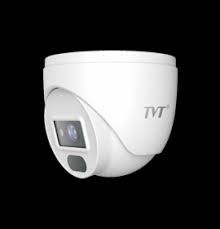Biometric Access Control Systems: Enhancing Security and Efficiency
In today’s fast-paced world, security is a top priority for businesses, organizations, and individuals alike. Traditional access control systems such as keys, cards, and PIN codes are no longer sufficient to ensure the safety of sensitive areas and valuable assets. This is where biometric access control systems come into play.
Biometric access control systems utilize unique biological traits of individuals, such as fingerprints, facial features, iris patterns, or voice recognition, to verify their identity and grant access to secured areas. These systems offer a higher level of security compared to traditional methods because biometric data is nearly impossible to replicate or forge.
One of the key advantages of biometric access control systems is their accuracy and reliability. Biometric identifiers are unique to each individual, making it extremely difficult for unauthorized personnel to gain access. This not only enhances security but also eliminates the risk of lost or stolen keys/cards being used by unauthorized individuals.
Moreover, biometric access control systems provide a convenient and efficient way for users to access secured areas. Instead of fumbling with keys or remembering complex PIN codes, users simply need to present their biometric data for quick and seamless authentication.
These systems can be easily integrated with existing security infrastructure, making them a cost-effective solution for businesses looking to upgrade their access control measures. Biometric access control systems can also be customized to meet specific requirements and can be scaled up as needed to accommodate growing operations.
Overall, biometric access control systems offer a robust solution for enhancing security while improving operational efficiency. By leveraging cutting-edge technology and unique biological traits, these systems provide a reliable and convenient way to protect valuable assets and sensitive information in today’s dynamic business environment.
6 Essential Tips for Optimizing Biometric Access Control Systems
- Ensure proper installation and calibration of biometric devices for accurate readings.
- Regularly update the biometric system’s software to address security vulnerabilities.
- Train users on the correct way to use the biometric system to avoid errors and false rejections.
- Implement a backup authentication method in case of biometric data failure or rejection.
- Securely store biometric data to prevent unauthorized access or misuse.
- Conduct periodic maintenance checks on the biometric devices to ensure optimal performance.
Ensure proper installation and calibration of biometric devices for accurate readings.
Ensuring proper installation and calibration of biometric devices is crucial to guarantee accurate readings and optimal performance of the access control system. Proper installation involves placing the biometric devices in strategic locations that facilitate easy and convenient user authentication. Calibration ensures that the biometric sensors accurately capture and analyze the unique biological traits of individuals, such as fingerprints or facial features, for reliable identification. By paying attention to these details during installation and calibration, businesses can maximize the effectiveness of their biometric access control system, enhancing security and efficiency in access management.
Regularly update the biometric system’s software to address security vulnerabilities.
It is crucial to regularly update the software of your biometric access control system to address security vulnerabilities. By staying up-to-date with the latest software patches and updates, you can ensure that your system remains secure against emerging threats and potential exploits. Updating the software also helps in improving the overall performance and reliability of the biometric system, ensuring smooth operation and enhanced security for your organization’s access control needs.
Train users on the correct way to use the biometric system to avoid errors and false rejections.
To ensure the optimal performance of a biometric access control system, it is crucial to train users on the correct way to utilize the system. By providing clear instructions and guidance on how to properly interact with the biometric sensors, users can avoid errors and false rejections, thus enhancing the overall efficiency and effectiveness of the system. Training users on best practices for using the biometric system not only helps in reducing instances of authentication failures but also promotes a smooth and seamless user experience, ultimately maximizing the security benefits offered by this advanced technology.
Implement a backup authentication method in case of biometric data failure or rejection.
It is crucial to implement a backup authentication method in case of biometric data failure or rejection when using a biometric access control system. While biometric technology is highly accurate and secure, there may be instances where the system fails to recognize an individual’s biometric data due to factors such as environmental conditions or changes in the user’s biological traits. By having a backup authentication method, such as a PIN code or access card, users can still gain entry even if their biometric data is not accepted, ensuring seamless access and preventing any disruptions in security protocols.
Securely store biometric data to prevent unauthorized access or misuse.
It is crucial to securely store biometric data to prevent unauthorized access or misuse in a biometric access control system. Biometric data, such as fingerprints or facial features, is highly sensitive and unique to each individual. By implementing robust encryption protocols and access controls, organizations can ensure that biometric data is protected from cyber threats and unauthorized use. Properly securing biometric data not only safeguards individuals’ privacy but also upholds the integrity and reliability of the access control system, enhancing overall security measures.
Conduct periodic maintenance checks on the biometric devices to ensure optimal performance.
It is essential to conduct periodic maintenance checks on biometric devices to ensure optimal performance and reliability. Regular maintenance helps identify and address any potential issues or malfunctions promptly, preventing downtime and ensuring seamless operation of the access control system. By proactively monitoring and servicing biometric devices, businesses can maintain high levels of security and efficiency, ultimately safeguarding their valuable assets and sensitive information.




